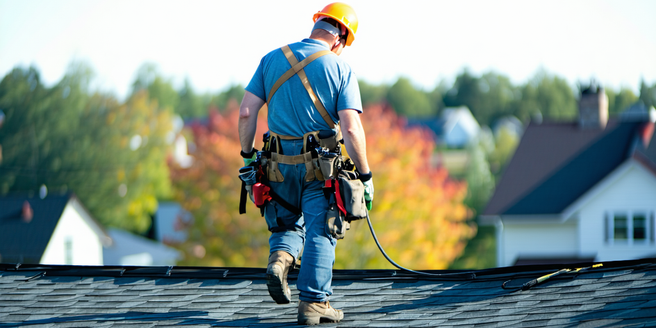Diy Home Maintenance Tips

Understanding Your Home’s Plumbing System
Understanding your home’s plumbing system is vital for successful DIY maintenance. At its core, a plumbing system consists of three main components: water supply lines, drainage systems, and fixtures. Start by locating your main water shut-off valve, essential in emergencies or repairs. Regular inspection of visible pipes can prevent leaks before they escalate. Identifying unusual noises, such as banging or hissing, in your pipes could point to air pockets but addressing these issues early on is crucial. Familiarize yourself with common plumbing terms like P-traps, which are essential in preventing sewer gases from entering your home. Regular maintenance like clearing clogged drains using a simple combination of baking soda and vinegar can keep your pipes clear without harsh chemicals. By acquiring a basic understanding, homeowners can tackle small issues confidently and prevent costly repairs.
Essential Tools for DIY Home Repairs
Equipping your toolbox with essential tools is the foundation of any DIY home repair project. A reliable set of screwdrivers, including both flathead and Phillips, caters to various fasteners around the home. A claw hammer is indispensable for tasks like assembling furniture or minor demolition. Adjustable wrenches provide flexibility in tightening or loosening nuts and bolts of different sizes. A tape measure is crucial for ensuring accuracy in fitting materials or furniture. Utility knives prove useful for cutting through different materials, from cardboard to drywall. Hand saws allow you to tackle woodwork projects without heavy machinery. Invest in a cordless drill to efficiently drive screws or bore holes. Don’t forget a level to ensure surfaces are even. With these essential tools, you’ll be prepared to address a multitude of home repair challenges.
Preventative Measures for Roof Maintenance
Regular roof maintenance is key to preventing costly repairs down the line. Start with biannual inspections, ideally in the spring and fall, to catch any issues before they worsen. Look for visible signs of damage, such as cracked or missing shingles, which can lead to leaks. Clean gutters regularly to prevent water buildup that can compromise the roof’s integrity. Trimming overhanging branches reduces the risk of branches damaging the roof during storms. Moss or algae growth indicates excess moisture, which can deteriorate roofing material; address this with specialized cleaning solutions or zinc strips. Inspect flashings around chimneys, skylights, and vents, as they provide critical barriers against water intrusion. Re-caulking these areas when needed is vital. By adopting these preventative measures, homeowners can prolong the life of their roof and avoid unexpected expenses.
Basic Electrical Fixes You Can Do Yourself
Basic electrical repairs can be safely managed with the right knowledge and caution. Always begin by turning off the power to the area you’re working on at the circuit breaker. Replacing a faulty light switch involves unscrewing the cover plate and the old switch, and then simply rewiring the new switch using the same connections. Installing new light fixtures is another common task; ensure the fixture is securely connected to the ceiling bracket. Dealing with frequently tripping circuit breakers might indicate an overloaded circuit; redistributing the load can often resolve this. Check outlets for tight connections if they’re not working properly, sometimes simply tightening the screws can resolve the issue. Always use a voltage tester to ensure wires are not live before touching them. With these precautions, homeowners can perform simple fixes safely and confidently.
Maintaining Your Home’s Heating and Cooling Systems
Regular maintenance of your heating and cooling systems is essential for efficiency and longevity. Change HVAC filters every 1-3 months to improve air quality and system performance. Inspect outdoor units monthly for debris obstructions around coils and fins, ensuring efficient airflow. Schedule annual professional check-ups to address system specifics like refrigerant levels or potential mechanical issues. Calibrate your thermostat regularly for accurate temperature readings. Bleed your radiators if you have hot water heating to remove trapped air. For portable space heaters or fans, keep them dust-free and inspect cords for any frays. Central air conditioning units benefit from covering during off-seasons to protect against weather damage. Proper insulation around ducts can prevent energy loss, maintaining desired temperatures with less energy. By performing these tasks routinely, homeowners can ensure their systems function optimally through all seasons.